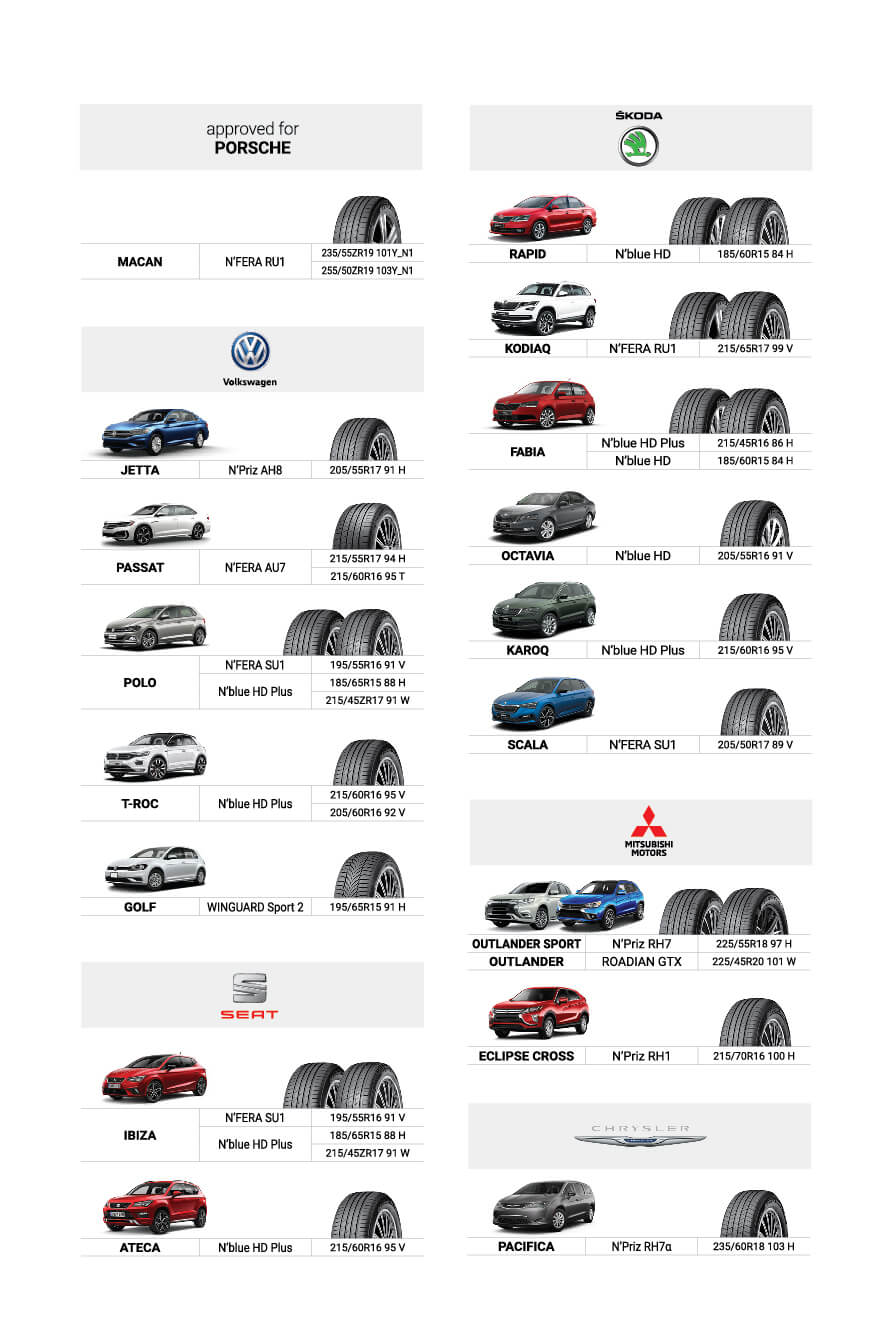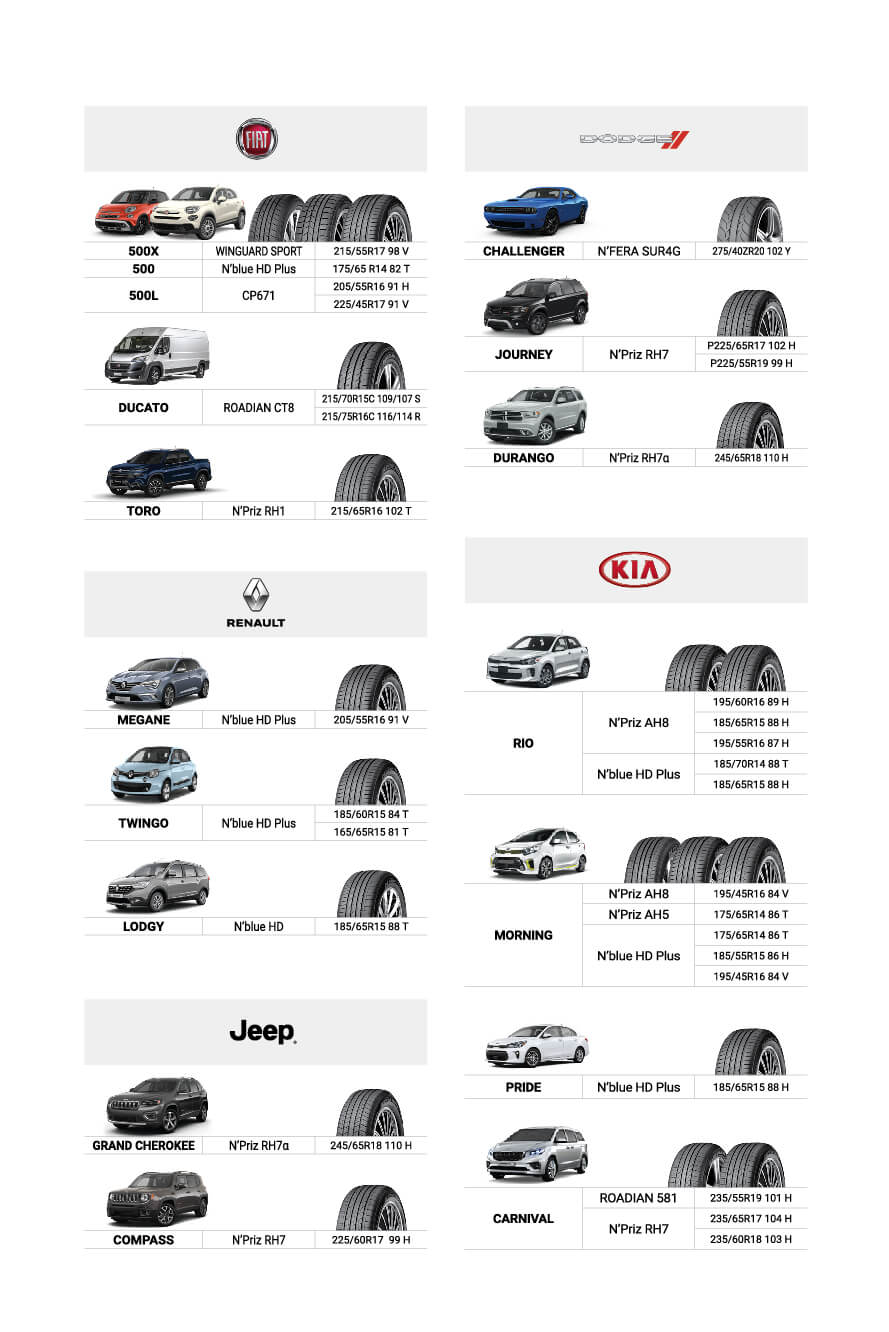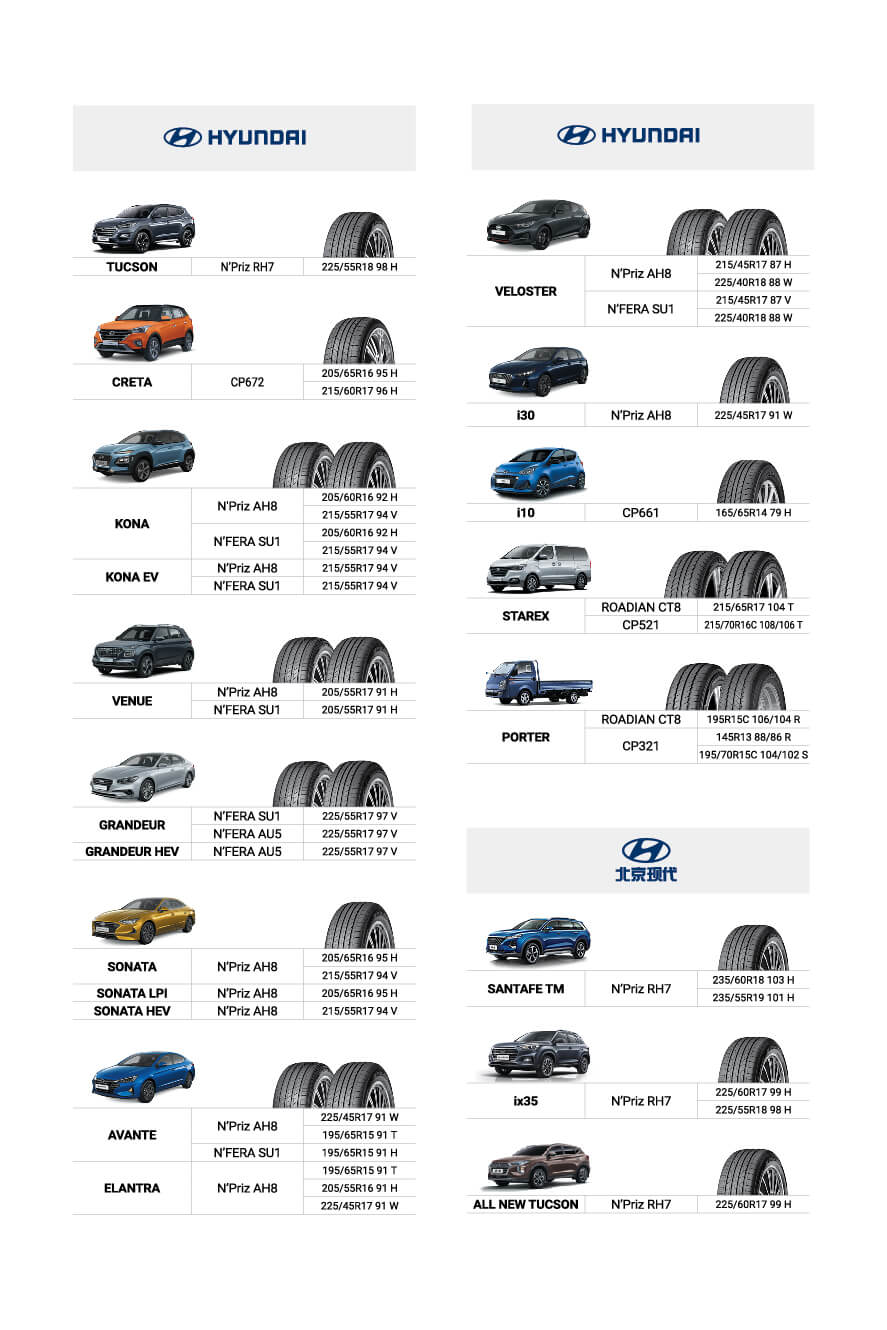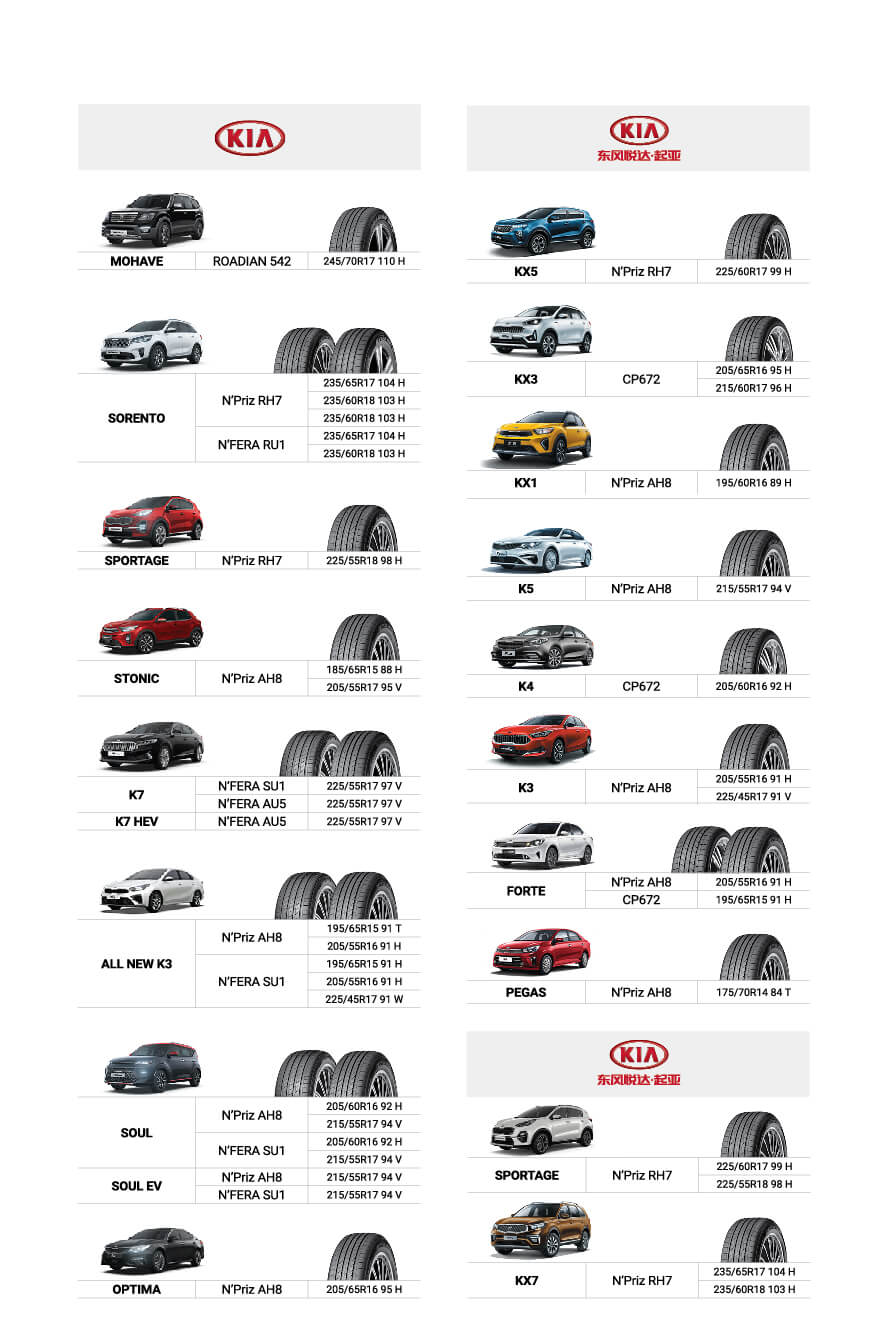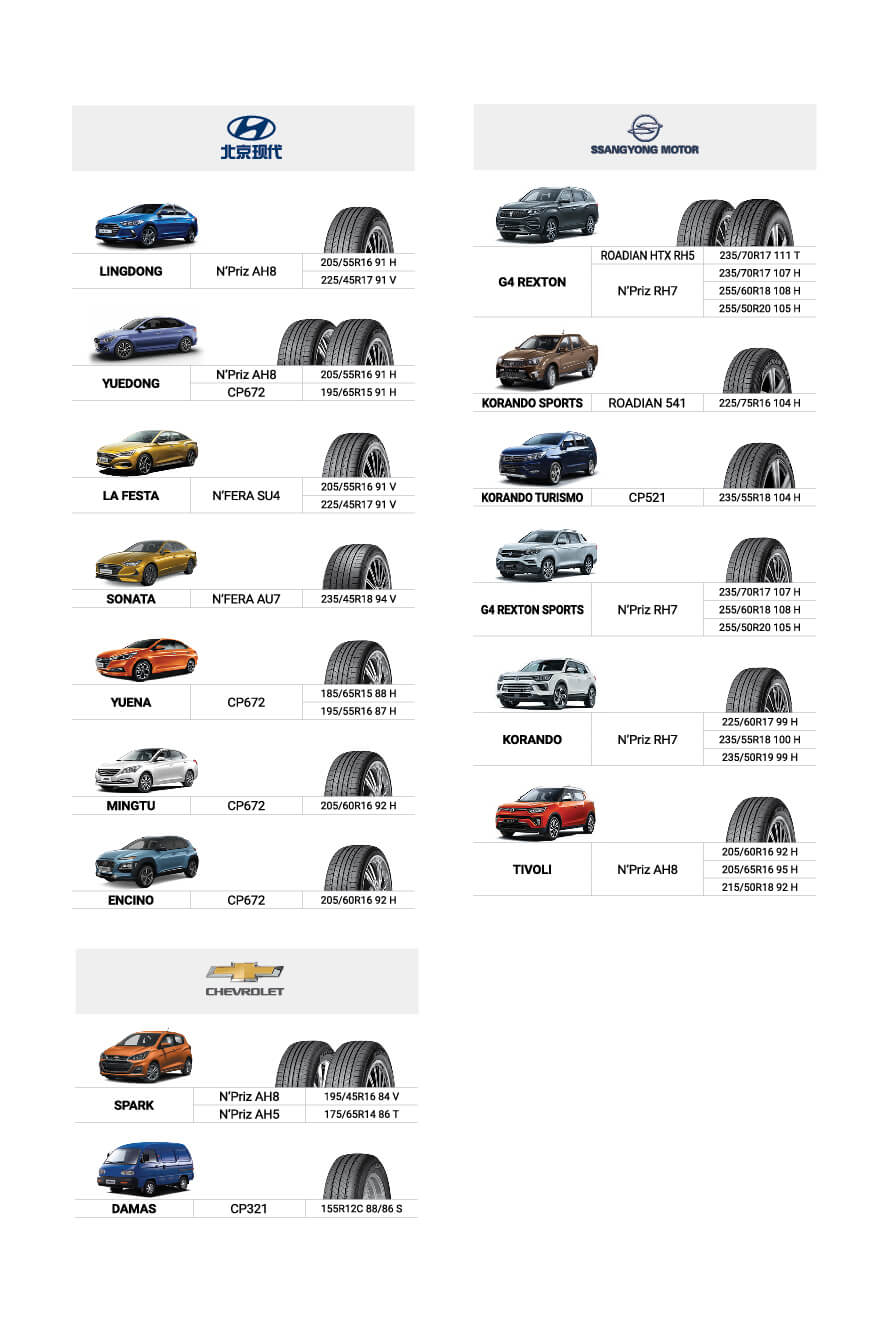We recommend that the tires chosen for use should have a maximum speed rating equal to or higher than the original equipment (O.E.) tires. This is because if tires with a lower maximum speed rating are utilized and the vehicle exceeds the standard speed for which the tires are rated, it may result in diminished tire performance and potential abnormalities in the vehicle.
The tire sidewall contains crucial information for safety, including size, type, load index, maximum speed rating, tire pressure, date of manufacture, and other details such as the brand and model of the product. Being able to read the markings on the tire sidewall helps you better understand the characteristics of the tire, providing valuable information for purchasing, installation, and maintenance, as well as when seeking service for your tires.
The usable load capacity must not exceed the load index specified on the tire sidewall or the maximum load limit for the vehicle indicated in the vehicle tire size specification sheet. Exceeding the recommended load capacity can lead to heat buildup in the tire and wheel assembly, potentially causing tire damage.
Yes, it does. We recommend the following tips to help extend the lifespan of your tires:
· Avoid driving at high speeds, as high speeds can generate excessive heat, increasing the rate of tire wear. Drive at safe speeds within legal limits.
· Avoid rapid and sharp turns on curves and road angles.
· Avoid sudden acceleration and abrupt stops.
· Avoid driving on the edges of roads, in potholes, or over obstacles.
· Maintain the recommended tire pressure specified for your vehicle or appropriate for the intended use.
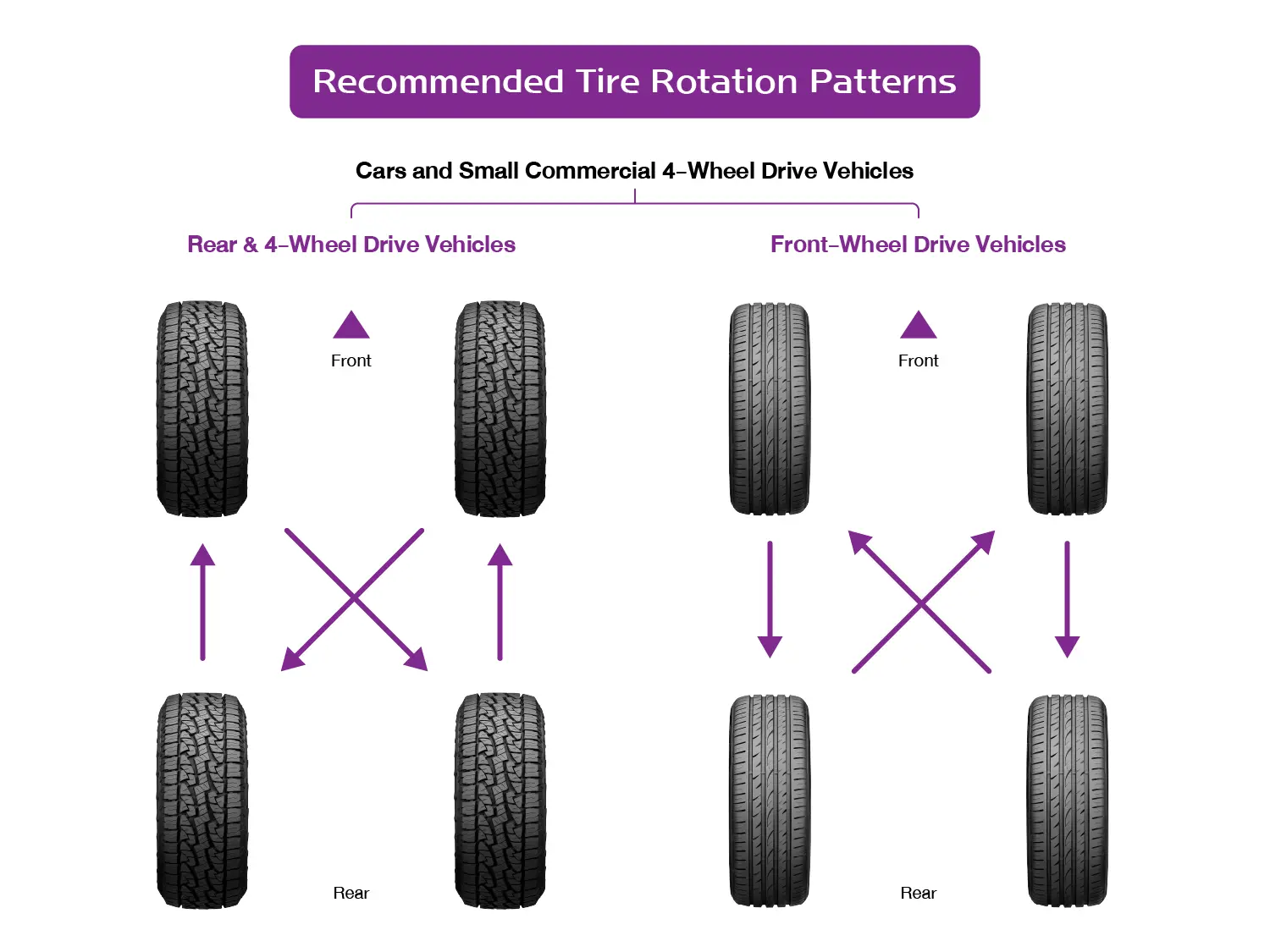
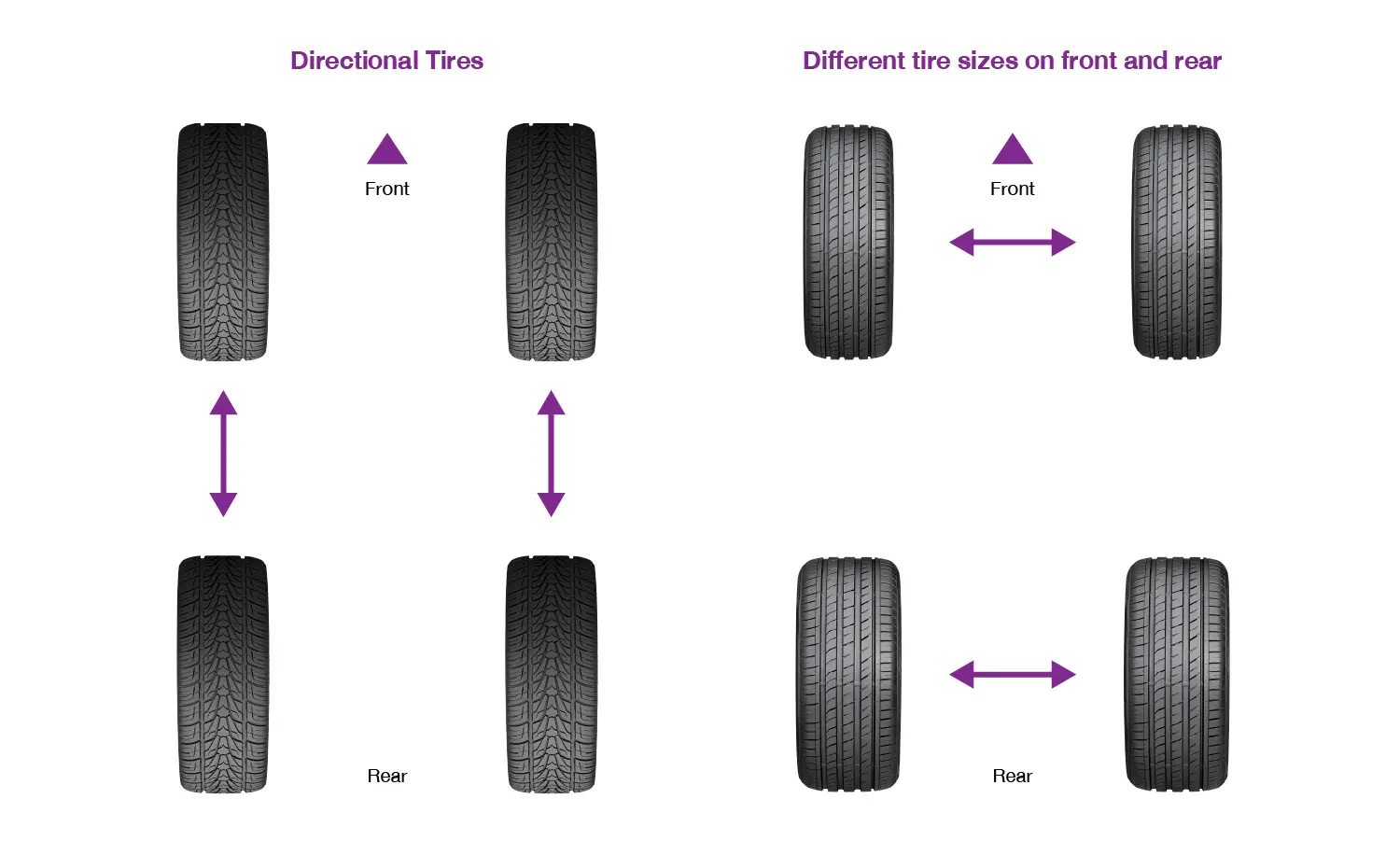
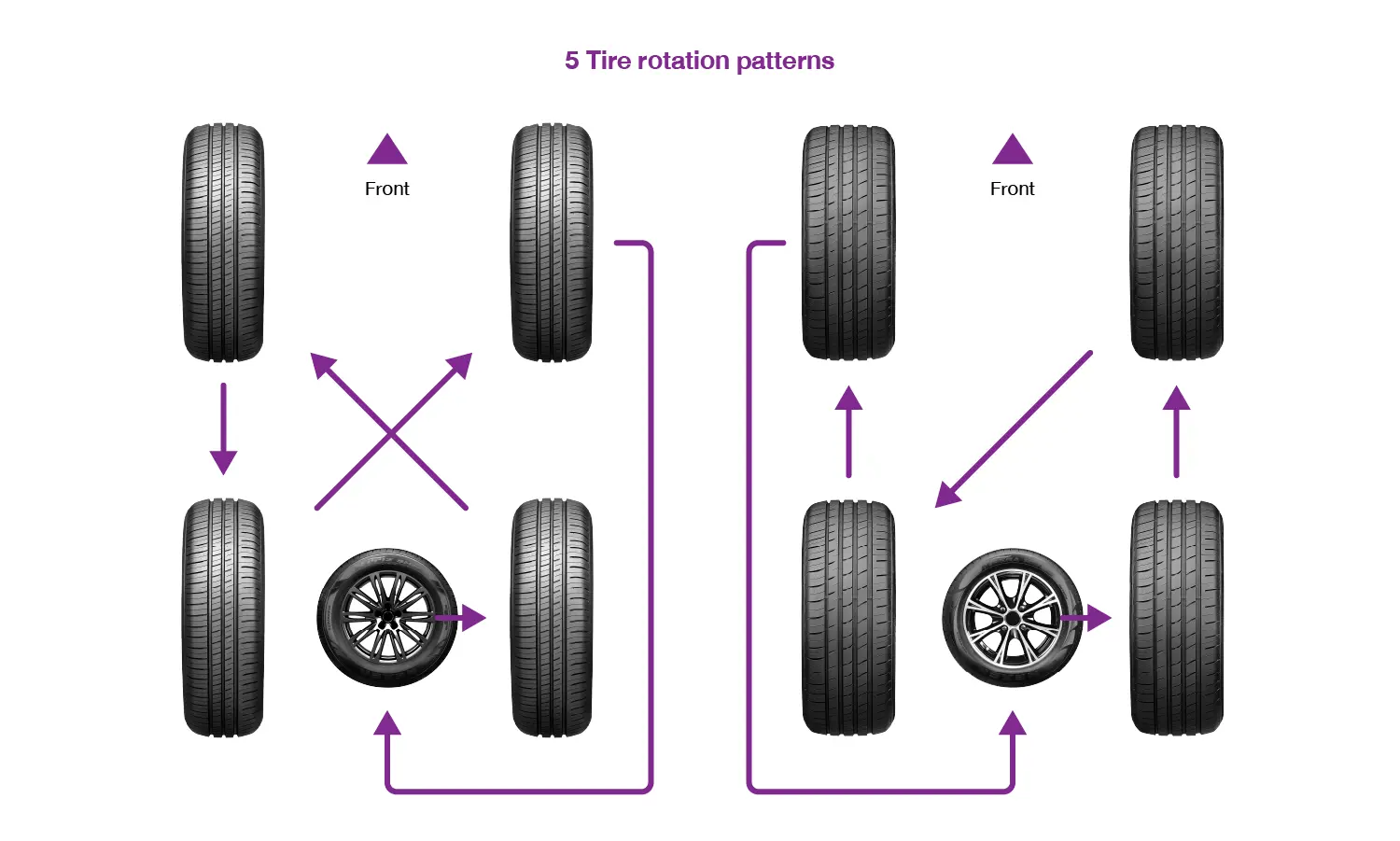
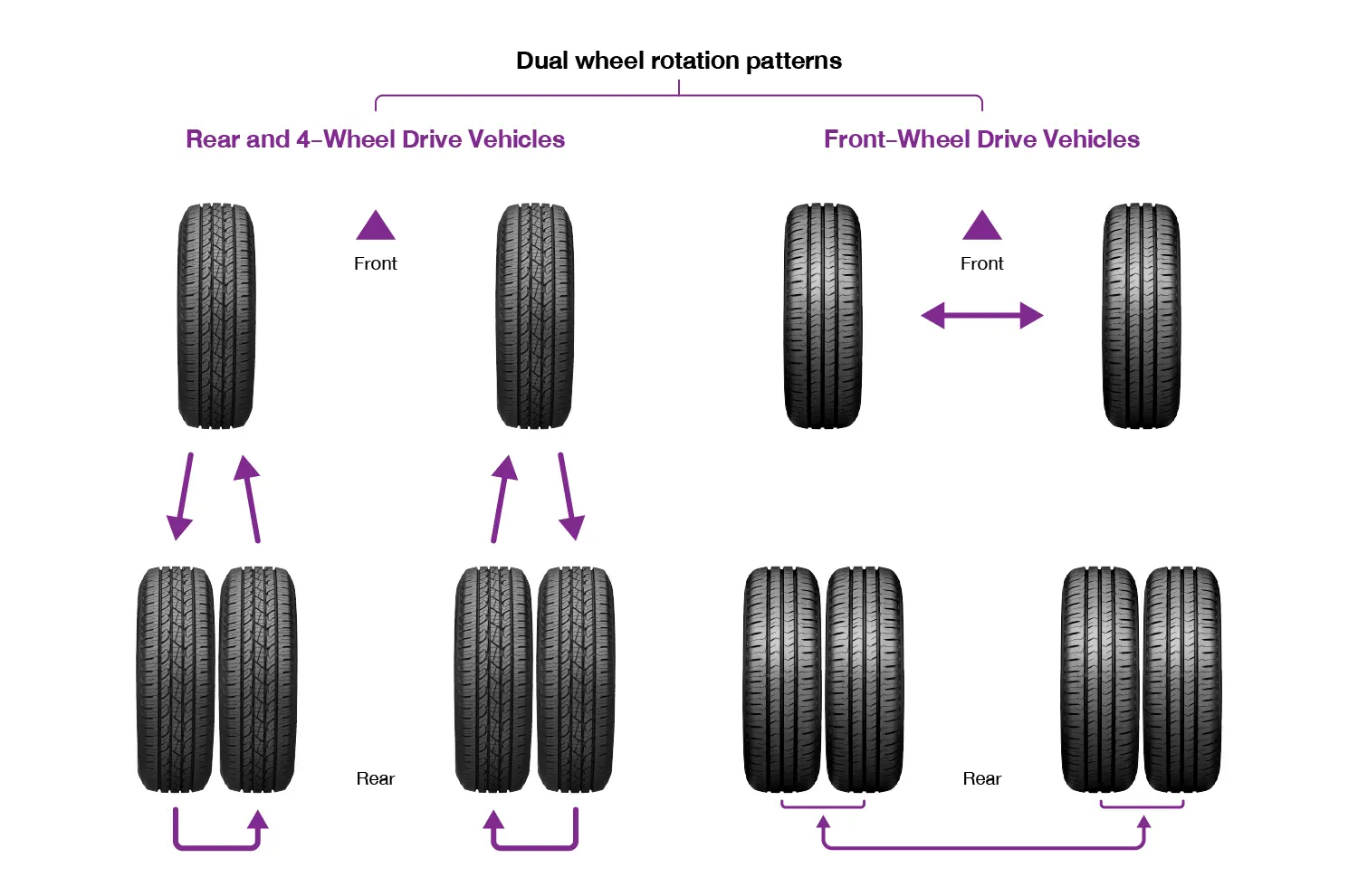
Proper care of your tires can enhance driving comfort and extend tire life. Here are some recommendations:
· Check Tire Pressure: Regularly check your vehicle’s tire pressure every month using a tire pressure gauge. Ensure the tires are cool (either check them in the morning or let them cool down for at least 3 hours after driving). Maintaining proper tire pressure is crucial for safety and optimal performance.
· Inspect Tires: Regularly inspect your tires for cuts, bulges, punctures, or any abnormal wear. If you notice any irregularities or damage, consult a professional for further inspection.
· Alignment Check: If you observe abnormal tire wear on the front tires, have the alignment checked promptly. Proper wheel alignment ensures even tire wear and contributes to extended tire life.
· Rotate Tires: Follow the recommended tire rotation schedule outlined in your vehicle’s manual or the tire manufacturer’s warranty. Regular rotation helps ensure even wear across all tires.
· Wheel Balancing: Ensure your tires are properly balanced when installed on the wheels. Imbalanced tires can lead to uneven wear and affect driving comfort.
· Follow Manufacturer Guidelines: Adhere to the tire care guidelines provided in your vehicle’s manual and the tire manufacturer’s recommendations. This includes load-carrying capacity, speed ratings, and any specific instructions.
There are several factors that influence the lifespan of your tires, such as:
· Tread Composition: The composition of the tire tread.
· Structural Components: The materials and construction of the tire’s structure.
· Driving Conditions: How and where the vehicle is driven.
· Tire Maintenance: Regular care and maintenance of the tires.
· Geographic Conditions: The climate and terrain where the vehicle is used.
· Environmental Factors: Exposure to sunlight, heat, and other environmental elements.
· Driving Habits: The driver’s behavior, such as braking, acceleration, and cornering.
These are the reasons why it’s challenging to specify an exact mileage for the lifespan of tires. Special attention should be given during braking, acceleration, cornering, etc., to help extend tire life. Using tires with advanced tire technologies from Nexen Tire is another way to enhance tire longevity. If you have concerns about the wear rate of your tires, please consult an authorized dealer in your area.
If a tire has lost all or most of its air pressure, it needs to be removed from the wheel for a thorough inspection to ensure that no damage has occurred. If a tire is flat and has been driven even for a short distance, it may sustain damage beyond repair. Punctures, nail holes, or tears, especially those larger than 0.6 cm (1/4 inch) on the tire’s tread surface, may be repairable by a trained technician using industry-certified methods. However, tires with larger punctures or tears, particularly those exceeding 0.6 cm (1/4 inch) or occurring on the sidewall, should not be repaired. Additionally, tires with bulges, cuts, or tread depths less than 1.58 millimeters should not be repaired.
There are indicators of tire wear, such as “tread wear bars” or “tire wear indicators,” located at the base of the main tread grooves and positioned across the tread. These indicators resemble narrow bands of smooth rubber material that run perpendicular to the direction of the tread. When you see these wear bars or if the tread depth is 1.58 millimeters or less, it indicates that the tire is worn out, and it’s time to replace it.
In another scenario, for those who drive short distances but have been using the tires for an extended period, even if the tread depth is still within usable limits, if the rubber compound begins to harden or shows signs of cracking, it indicates that the tire has deteriorated, and it’s also time to replace the tires.
It is strictly prohibited to use tires that are smaller than the ones originally fitted on the vehicle. Tires should be selected following the specified size or those certified according to the recommendations of the car manufacturer or authorized dealer.
Wheel balancing is essential for the safety and optimal performance of the vehicle, especially at high speeds. If the components of the tire and wheel are not balanced, it can result in vibrations caused by the wheel, wobbling (oscillation from side to side), or noises from the components of the wheel (tire and wheel moving up and down). Therefore, it is crucial that these components are properly balanced during installation.
Proper wheel alignment is achieved when the entire suspension and steering system operate effectively. If the vehicle drives straight and remains stable, it indicates that the wheels have been aligned correctly. Correct wheel alignment results in even tire wear and precise steering control. If the wheel alignment is incorrect, it can lead to uneven tire wear, handling abnormalities, or steering responsiveness issues (such as pulling to one side). Your vehicle may require either “front-end” or “four-wheel” alignment, depending on its symptoms. While the cost of wheel alignment may be significant, it is worthwhile when considering tire longevity, performance, and ride comfort.
The vehicle manufacturer determines the size and type of tires to be installed on their vehicles. They conduct necessary tests to establish the appropriate tire inflation pressure for the maximum performance of the vehicle. This information can be found on the vehicle’s data card (located inside the driver’s side door) and in the owner’s manual. If your new tires are the same size as the ones that came with the vehicle, inflate them to the pressure specified in the data card.
Nitrogen is a dry, inert gas that is essentially air with oxygen removed (nitrogen comprises nearly 79% of air). Nitrogen has specific properties that help reduce pressure loss that can occur naturally from tires. However, there are still other points where air can leak (the interface of the tire and the wheel, the valve, and the wheel itself), so there is no guarantee that tire pressure will remain stable, whether filled with regular air or nitrogen. Tires manufactured by Nexen Tire are designed to deliver the desired performance whether filled with regular air or nitrogen. As long as users adhere to the recommended pressure values specified by the vehicle manufacturer, maintaining consistent tire pressure is crucial. Deviations from recommended pressure levels can impact various aspects, such as
· reduced road grip
· decreased wet traction
· increased risk of accidents
· decreased tread life
· increased fuel consumption
· reduced tire lifespan due to excessive heat generated from prolonged road contact.
Uneven tire wear can be initially observed by differences in the tread pattern on one side compared to the other. This can result in high and low spots, or even steel belt exposure. Uneven tire wear can stem from various causes, such as lower than recommended tire pressure, misalignment, and improper wheel balancing.
Tire pressure, including the spare, should be checked at least once a month and before embarking on long journeys. The tires should be checked when they are cold (at least three hours after the vehicle has been parked and before driving more than one mile or two kilometers). Heat can cause tire pressure to increase, and measurements taken will deviate from normal temperatures. To measure tire pressure, use a straight-on tire pressure gauge to check and maintain the recommended pressure levels as indicated on the vehicle’s tire information placard or in the owner’s manual. Incorrect tire pressure, either too high or too low, can affect vehicle handling.
If possible, it is recommended to replace all four tires simultaneously. However, if you need to replace only two tires, make sure that the new tires are the same size and type as the current ones. Additionally, the new tires should be installed on the rear wheels, regardless of whether your vehicle is front-wheel drive, rear-wheel drive, or all-wheel drive. This helps maintain control and stability, especially in slippery conditions. Always follow the manufacturer’s recommendations and guidelines for tire replacement.
· Because new tires provide better traction on wet roads compared to old tires that may have reduced tread depth due to usage.
· It helps reduce oversteer and the loss of stability on wet roads that may occur.
The faster wear in the center of the tire compared to the rest of the tread surface can result from overinflation, aiming to increase load-carrying capacity. It may also occur due to excessive narrowness of the wheel track, improper usage, loss of control, inappropriate tire rotation, aggressive acceleration, or low tire pressure, especially in high-performance tires.
When one side of the tire shoulder wears faster than the rest of the tread surface, it can be caused by various factors, such as misalignment of the front and/or rear (for example, toe or camber angles), worn or compromised suspension components, aggressive cornering, incorrect tire rotation, using the wrong type of tire, or improper installation.
When the tread wears unevenly in multiple spots around the circumference, it can indicate issues such as brake and wheel lock-up, improper wheel alignment, tread separation, irregularities in the road surface, incorrect tire mounting or installation, manufacturing defects, or damage from chemical contamination.
A common reason for this is the misalignment of the steering axis or incorrect toe angle. Aligning the steering axis between the two front wheels as closely as possible to the center is crucial in preventing such uneven wear.
The discoloration on the sidewalls of the tire is not a sign of damage and can occur due to various reasons. One of them is the presence of ozone-resistant compounds in the tire’s rubber composition, which can react with ozone in the air. The components with ozone-resistant properties migrate to the surface of the rubber material, leaving a brownish dust residue. This reaction is normal and tends to disappear over time with usage.
Another possible cause of color change may be dust accumulation from regular driving or brake dust that comes into contact with the brake discs, especially when the brake pads are new or have recently been replaced. This discoloration is more apparent when the brakes are new or freshly adjusted. In any case, we recommend cleaning your tires with a mild soap and clean water.
The wearing or lifespan of a tire depends on various factors such as driving behavior, geographical conditions, vehicle type, tire type, and maintenance practices. We recommend having your tires or vehicle inspected at one of our nearby dealerships to determine if there are any technical issues or maintenance issues that may contribute to premature or abnormal wear.
Your satisfaction is important to us. Please have a representative contact us to conduct a tire inspection. We are happy and willing to assist in resolving any issues you may encounter.
Indentations on tires resemble waves on the sidewall are a common characteristic of the radial tire structure. These Indentations, which do not impact the tire’s performance, result from the bonding points of the reinforcement material inside the sidewall. They are easily noticeable in larger radial tires with a wide footprint, becoming more apparent when there is increased tire pressure. However, if there are raised areas instead of indentations on the sidewall, there is a possibility that the tire structure is damaged. If you have any questions or concerns regarding sidewall indentations, please contact your tire dealer for an inspection.
The loud noise generated by tires can result from various factors, including usage patterns, tire types, road conditions, wheel alignment, or as a warning sign that your tires are worn. We recommend that you have your tires inspected at a dealership near you. You can search for a dealer using the dealer locator on our website or click here.
Vibrations are a sign that your car has some issues that need to be addressed. Whether it’s the tires, suspension system, or the chassis, it should be inspected to identify the cause of the vibrations and corrected by a professional. If left unattended, vibrations can lead to increased tire wear and more severe issues, posing potential safety risks.
Properly inflating your tires is a crucial aspect of tire maintenance. The maximum tire pressure indicated on the sidewall of the tire is the pressure at which the tire can be safely used, but it does not necessarily represent the recommended tire pressure for your specific car. Please refer to the manufacturer’s recommendations for your car’s tire pressure, which can usually be found in the owner’s manual, on the driver’s side door jamb, or inside the glove compartment. Additionally, don’t forget to check the spare tire’s pressure. Tire dealers and retailers can also guide proper tire inflation.

